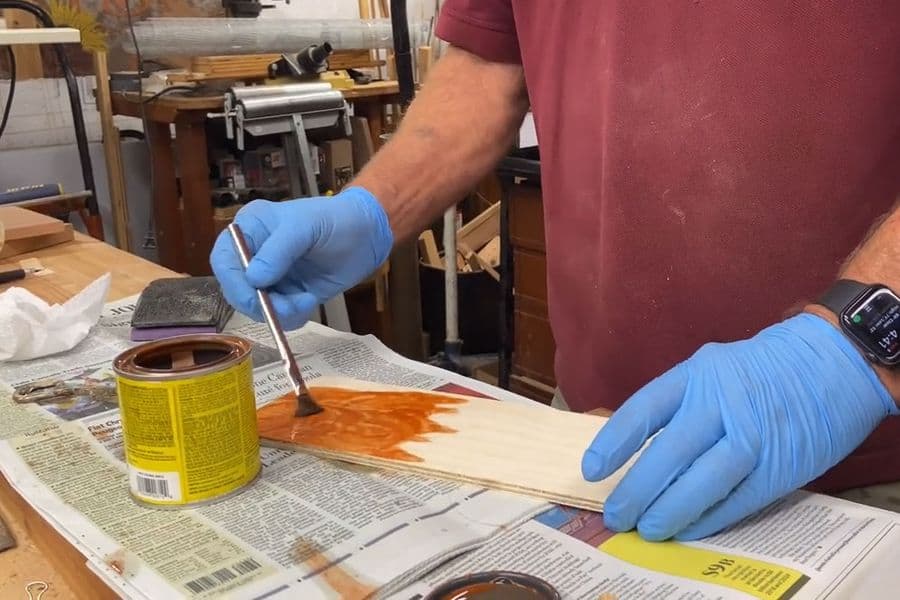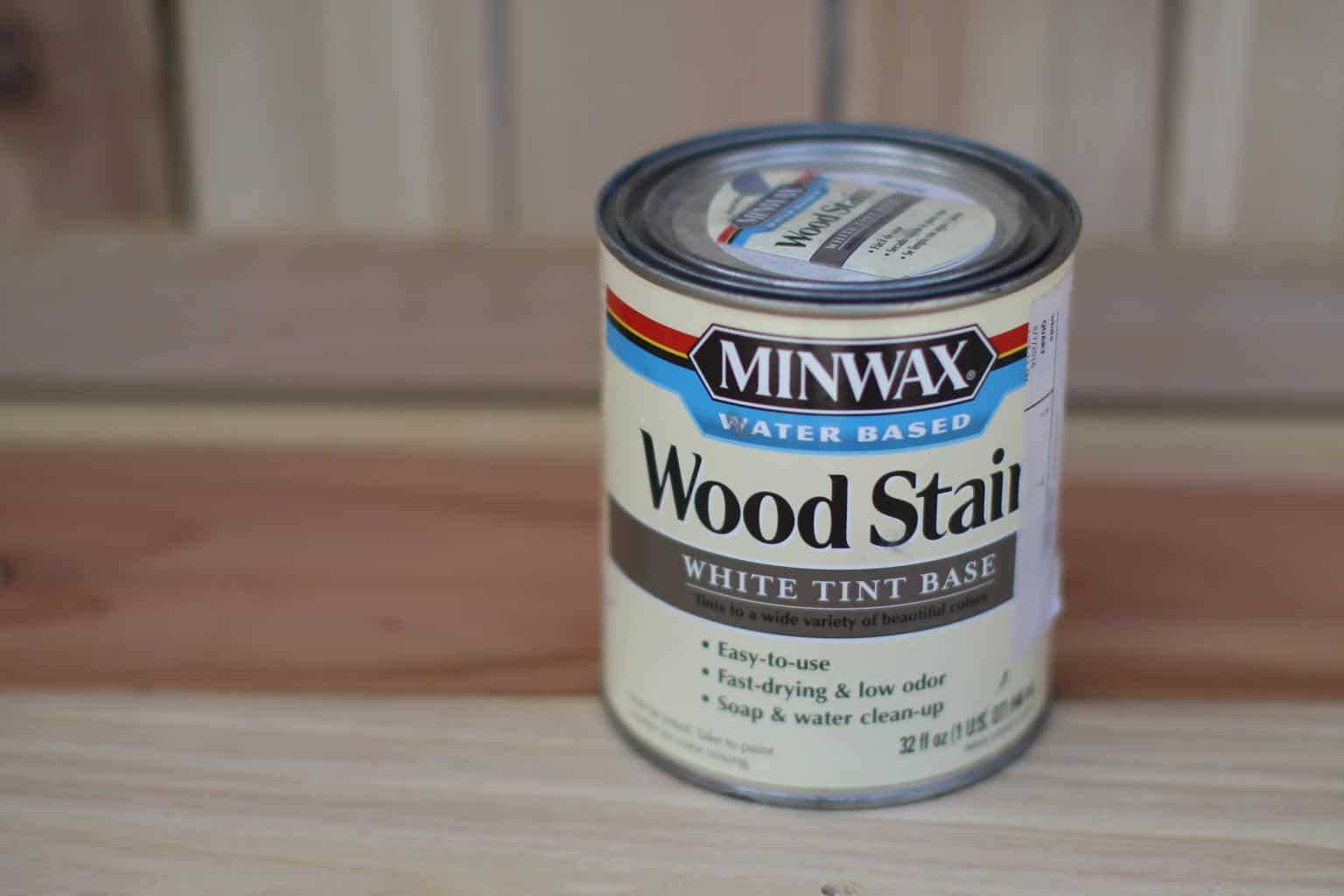Stains enhance and enrich the natural beauty of wood, and applying stain easy and fun DIY project. But when it comes to watching stain dry, it’s no more exciting than paint.
Whether you’re finishing a product with a tight deadline or just hate waiting around between steps, this article will give you guidance and insight into how to speed up the dry time of wood stain.
Contents
How Does Wood Stain Dry?
Stains move from a liquid to a solid through evaporation. They contain pigments or dyes for color, suspended in oil or resin, and are kept in their liquid form by the presence of solvents
Oil-based stains use mineral spirits as the solvent. For acrylic resin stains, the solvent is water. When spread onto wood in thin layers and exposed to air, the solvents are able to evaporate and the stain dries.
You need to know how fast stain dries so you can determine how long to wait to apply a wood finish, or to complete your project.
How to Dry Wood Stain Faster
As discussed above, the main factor that affects wood stain dry time is evaporation. However, reducing the number of coats of stain is another option that decreases the total amount of time you spend standing around waiting for wood stain to dry.

Keep reading for three solutions to increase the evaporation of solvents, as well as one product that can give excellent coverage in just one coat.
1. Choose a Fast Dry Stain
If you don’t want to spend days applying wood stain to your latest project, you’re far from the only one. In fact, the demand for quick-dry stain products has pushed manufacturers to develop new ways of getting the same color and coverage in less time.
Fast dry stains are a relatively new product on the wood stain market. These stains advertise dry times of 30 minutes to one hour. The dry times advertised, however, depend on near perfect conditions – 70 to 75 degrees Fahrenheit, with humidity measuring between 30 and 50%.
For example, Minwax has quite a few fast dry stain options.
If you stained two similar boards, one with fast-dry stain, and one with a water-based stain, there’s no hard evidence that shows the fast-dry stain would actually dry in less time.
It’s not clear from the manufacturer’s literature or ingredient list that there is anything in fast-dry stain that actually makes it dry faster. Instead, these stains are usually nanopigmented.
Nanopigments are colored nanoparticles, which measure between 1 and 100 nanometers in size. Due to their small size, they are able to penetrate even tightly grained hardwoods, and distribute evenly across the wood. One coat of nanopigmented wood stain can give you the same depth and richness of color that would take three coats of water-based stain to achieve, saving you time overall.
Whether they dry faster or not, they certainly shorten your total project time. Dispensing with the need for multiple coats means you can finish your project in a single afternoon.
2. Use Water-Based Wood Stain
If you haven’t already selected your stain product, choose a water-based stain for the quickest dry time.
There are two types of liquid wood stain: oil-based and water-based. As mentioned above, oil stains are primarily made of oil, with small amounts of mineral spirits acting as the solvent. Water stains are primarily acrylic resin – water is actually the solvent in these types of stains.
A water-based stain will naturally dry more quickly than an oil-based stains. Water-based stains are usually dry within two hours, and rarely take more than four.

The average dry time for oil based stains is six to eight hours, though they may take a full day for the tackiness to disappear. Curing takes longer, but you can recoat before the stain has fully cured.
A third option for staining wood is gel based stains. This type of stain goes on in a thick layer that is not rubbed into the wood. While gel based stains are great for achieving rich, even color, they take 24 hours to fully dry, making them a poor choice if your goal is to dry wood stain faster.
3. Increase the Air Circulation
Another method for drying wood stain more quickly is to increase the air circulation.
Evaporation happens when the solvent in the stain detaches from the pigment/dye and resin or oil at a molecular level, connecting instead to molecules in the air. However there is a limit to how much moisture air can absorb at one time.
Moving air over the surface of freshly stained wood will ensure a constant introduction of new air molecules. As moisture-laden air moves out of the way, drier air can take its place, absorbing the solvent and drying the stain.
There are a few different methods you could use to increase the air circulation in your area.
Use Windows
Opening windows and doors will help fresh air circulate through your work space. Creating a cross breeze by opening windows or doors on opposite sides of the room or building is even more effective.
Use Fans
You can also use fans to keep the air moving around the room. If you’re concerned about blowing dust or insects into your sticky stained surface, set the fans up parallel to the workpiece. The decrease in dry time won’t be as dramatic, but it will help somewhat.
You could also position multiple fans blowing directly across the stained wood surface. Depending on the environmental conditions, this could shave several hours off your stain dry time. However, dust and insects may blow into your workpiece, requiring a light sanding.
Dry Outside
It’s okay to bring your stained wood project outdoors on a day with a light breeze. However, if the forecast is for wind, it’s better to leave them inside. Gusts of wind can deposit large amounts of dirt or sand on your freshly stained workpiece, more than a light sanding can remove.
Bonus tip: try thinning your wood stain for faster dry times!

4. Lower the Humidity
Humidity is a measurement of how much moisture is in the air. It changes based on many variables, such as air pollution, temperature, and barometric pressure, and even how close you are to a body of water.
On a very humid day, the moisture receptors of air molecules are filled to capacity. Under these conditions, the solvents that keep stain liquid can’t evaporate. There’s nowhere for them to go.
Stain that can’t dry due to excessive moisture in the air will feel sticky or tacky to the touch. It may not adhere well to the wood.
It’s important to check the weather before you decide to spend the day staining. If your workspace is not climate-controlled, and the relative humidity is above 70%, you should change your plans.
If you’re working inside and have access to a dehumidifier, you may be able to lower the relative humidity below 70% to allow wood stain to dry properly. This depends on the power of your dehumidifier, the size of your work space, and just how humid it is. Remember to empty the dehumidifier at regular intervals.
It is especially important to check the humidity for exterior wood stain projects where a dehumidifier isn’t an option. As soon as you realize there’s a problem, stop staining.
Unfortunately, there’s not much you can do in that situation other than waiting for the humidity to break.
Make sure to read our reviews on picking up the best stain for wood filling.
Conclusion
Stain contains solvents. When these solvents have evaporated, the stain is dry. To encourage stain to dry faster, choose products that use water for the solvent, increase the air circulation in your drying area, and do what you can to control excessive humidity.
You can also shorten total dry time of stain by using a one-coat, nano pigmented stain.